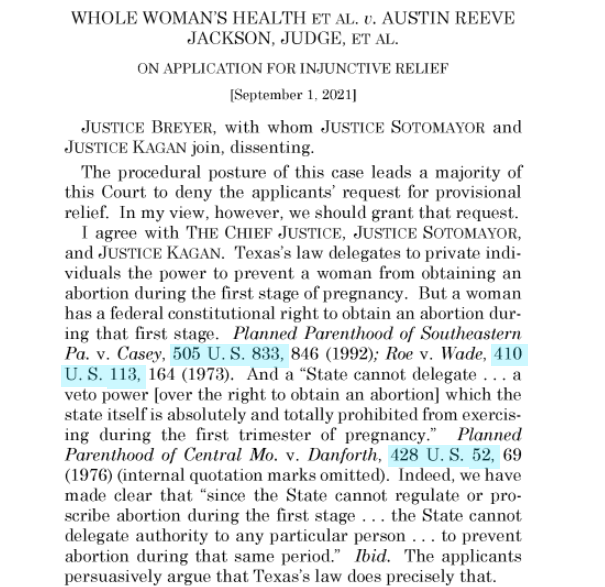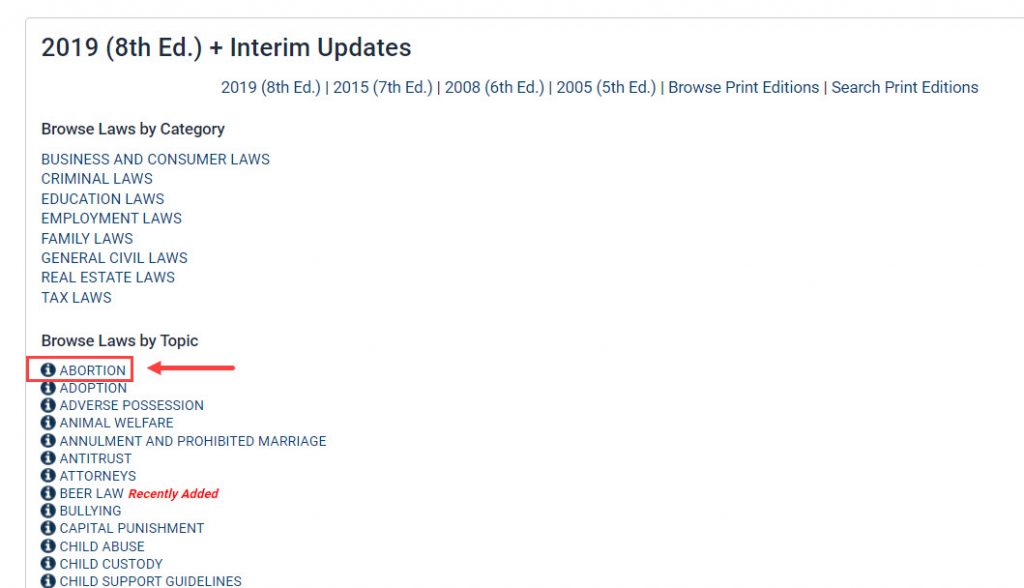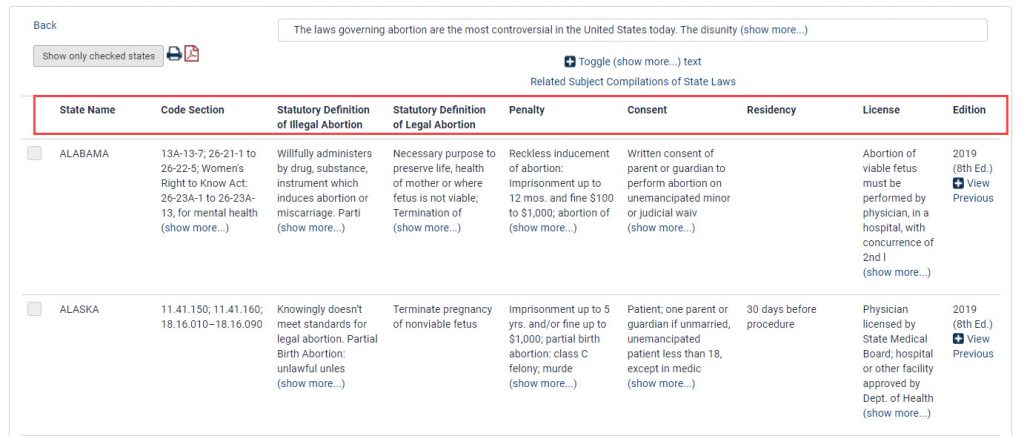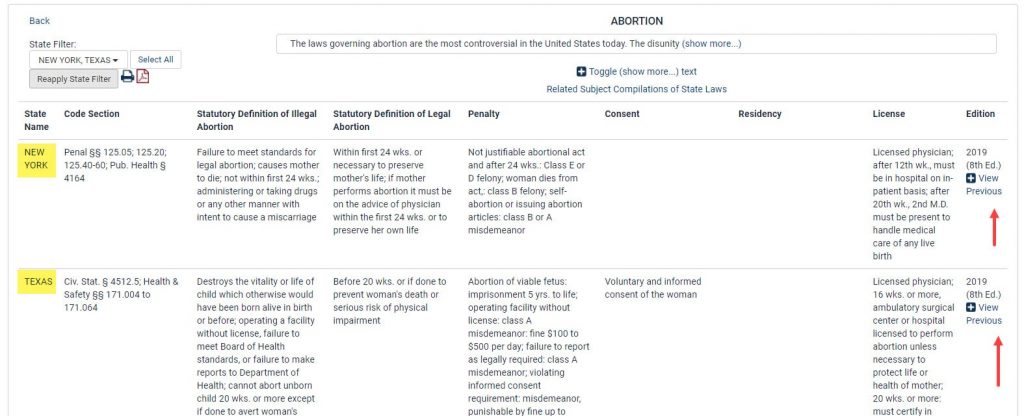In a 5-4 ruling last week, the Supreme Court of the United States issued a shadow docket refusing to block a Texas law banning abortion after six weeks. This new law violates the 1973 landmark decision Roe v. Wade, which declared a pregnant person has a constitutional right to an abortion. While the majority agreed the challenge to the new Texas law raised “serious constitutional questions,” they said challengers hadn’t shown that they would be “irreparably injured” should the law go into effect.
Texas Abortion Law
The new Texas law bans abortion once cardiac activity can be detected in an embryo, typically occurring around the sixth week of pregnancy. One of the strictest abortion laws in the nation, the statute also puts citizens in charge of enforcement. Any citizen—who does not have a connection to the women getting an abortion—can bring a civil suit against another individual (or individuals) who assist a pregnant person seeking an abortion during the time frame that would violate the ban. This can include the staff of abortion clinics, a person who drives the patient to the appointment, or anyone who funds the abortion. Plaintiffs can be awarded up to $10,000 per illegal abortion if they are successful.
This law affects all pregnant people. There is no exception for pregnancies resulting from rape or incest. Additionally, it does not permit abortions for health reasons, such as to protect the life of the pregnant person. In 2020, abortion clinics in Texas performed about 54,000 abortions on residents; more than 45,000 occurred at eight weeks of pregnancy or less.
Oppositionists argue that by the time a pregnant person misses their period, they are already four weeks pregnant, leaving little time to make a decision and obtain an abortion. This could affect teenagers who are unaware they are pregnant, low-income people who do not have the financial means to cover the cost of the procedure, people of color, and undocumented immigrants.
All About Shadow Dockets
A “shadow docket” is an expedited decision making process that is intended for emergencies. These decisions can be issued without any signatures, signed opinions, or guidance for lower-court judges. Shadow dockets were originally implemented for death penalty appeals or other emergencies, but have extended to hot-button issues such as COVID-19. Critics from both the right and left have called this improper use the Court’s power.
The term was coined in this article by William Baude, a professor at University of Chicago Law School. Any litigant can apply to a single justice, who then makes the decision whether or not to forward the dispute to the full Court. Five votes among the nine justices are needed to move forward, and the request must meet certain criteria showing applicants would suffer “irreparable harm” if it is not granted. In the case of the Texas law, the emergency request was sent to Justice Samuel Alito, as the court was in recess.
The Dissents
While the majority opinion was unsigned, consisting of a single long paragraph, the four dissenting justices filed opinions. Chief Justice Roberts’ dissenting opinion was joined by three liberal justices: Justice Breyer, Justice Kagan, and Justice Sotomayor.

Justice Sotomayer‘s dissent was the most notable, fully displaying the split within the court. Both Justice Sotomayer and Justice Breyer omitted the word “respectfully” from their dissents, which is typically used under normal situations. Justice Roberts argued that the Court needed more time to review the unorthodox statute.
The Court’s order is stunning. Presented with an application to enjoin a flagrantly unconstitutional law engineered to prohibit women from exercising their constitutional rights and evade judicial scrutiny, a majority of Justices have opted to bury their heads in the sand.
Stay in the Know with HeinOnline
Research both current and historical events with HeinOnline. A simple search for the term “shadow docket” returns nearly 150 results across all content, including:
- The Solicitor General and the Shadow Docket
- Transparency and the Shadow Docket
- Bringing the Supreme Court Out of the Shadows
- Narrowing Supreme Court Precedent from Below
National Survey of State Laws
National Survey of State Laws (NSSL) is a print and online resource that provides an overall view of some of the most-asked-about and controversial legal topics in the United States. Using this database, users can see how abortion laws vary across the U.S. Select abortion from the topics listing on the database homepage.

The top column includes important points for the law on abortion. Beneath, brief statements provide the core points for each state’s statute. References to state statutes and code sections are provided, helping researchers further their research.

Users can compare this law across specific states, providing a new chart showing only the selected states. For example, let’s compare Texas and New York. Users can also view the law as it appeared in previous version of this title by selecting View previous editions.

What’s Next
The Supreme Court decision will likely spark other states to try and pass similar laws. While states have been attempting to pass more restrictive abortion bans, they have been unsuccessful. It also raises the question of court packing, a hot topic that erupted following former President Trump’s nomination for conservative Justice Amy Coney Barrett, after the passing of Ruth Bader Ginsburg. President Joe Biden condemned the Supreme Court for not blocking the ban.
Stay tuned to the HeinOnline blog as we continue to follow this hot topic. Subscribe today!



